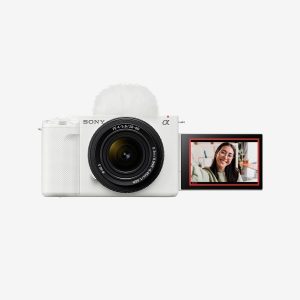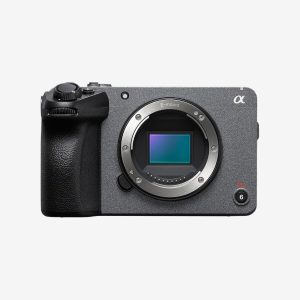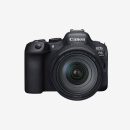The Canon R6 Mark II specifications include the major updrages from the previous model. The latest and new 24.2-megapixel full-frame CMOS sensor is paired with Canon’s powerful DIGIC X Image Processor. This powerful combination provides an impressive ISO range of 100-102400 along with expanded feature to 204800 for extreme low-light situations. It can take up to 40 frames per second using the electronic shutter, or 12 frames per second with the mechanical shutter. The RAW burst mode allows you to shoot at approximately 30 fps. It also has a pre-shooting option to catch moments that happened just before you fully pressed the shutter button.
Canon EOS R6 Mark II Design and Handling
The Canon EOS R6 Mark II keeps its predecessor’s elegant design while introducing subtle changes. It has a magnesium alloy chassis with excellent weather sealing. Overall, it’s slightly lighter than the original R6. The power switch is relocated to the right side of the camera. In its place, a new stills/video mode selector is on the left side for quick transitions between shooting modes without menu navigation.
The camera retains three customizable main dials: one for your index finger near the shutter button, another for your thumb on the top plate, and a large dial on the rear. This setup offers flexibility in tailoring the camera’s operation to your preferences.

Sensor
The Canon EOS R6 Mark II comes with a new 24.2-megapixel full-frame CMOS sensor which is an upgrade compared to its predecessor’s 20MP sensor. The sensor measures approximately 36.0 x 24.0 mm, with a pixel unit of about 6.00 µm square. It’s compatible with Dual Pixel CMOS AF for fast and accurate autofocus performance.
The sensor features an RGB primary color filter system and a non-detachable built-in low-pass filter installed in front of it. This setup helps reduce moiré patterns and color artifacts in your images. You can shoot with confidence in poor light and indoors because the camera maintains clean images up to ISO 3200. You can choose between RAW, CRAW (Compressed RAW), JPEG, and HEIF formats for file options. The CRAW option is particularly useful, offering a good balance between file size efficiency and image quality.
Canon has increased the shutter durability to an impressive 400,000 actuations, up from 300,000 in the previous model. This significant improvement means you can expect the camera to handle even more shots before potentially needing a shutter replacement.
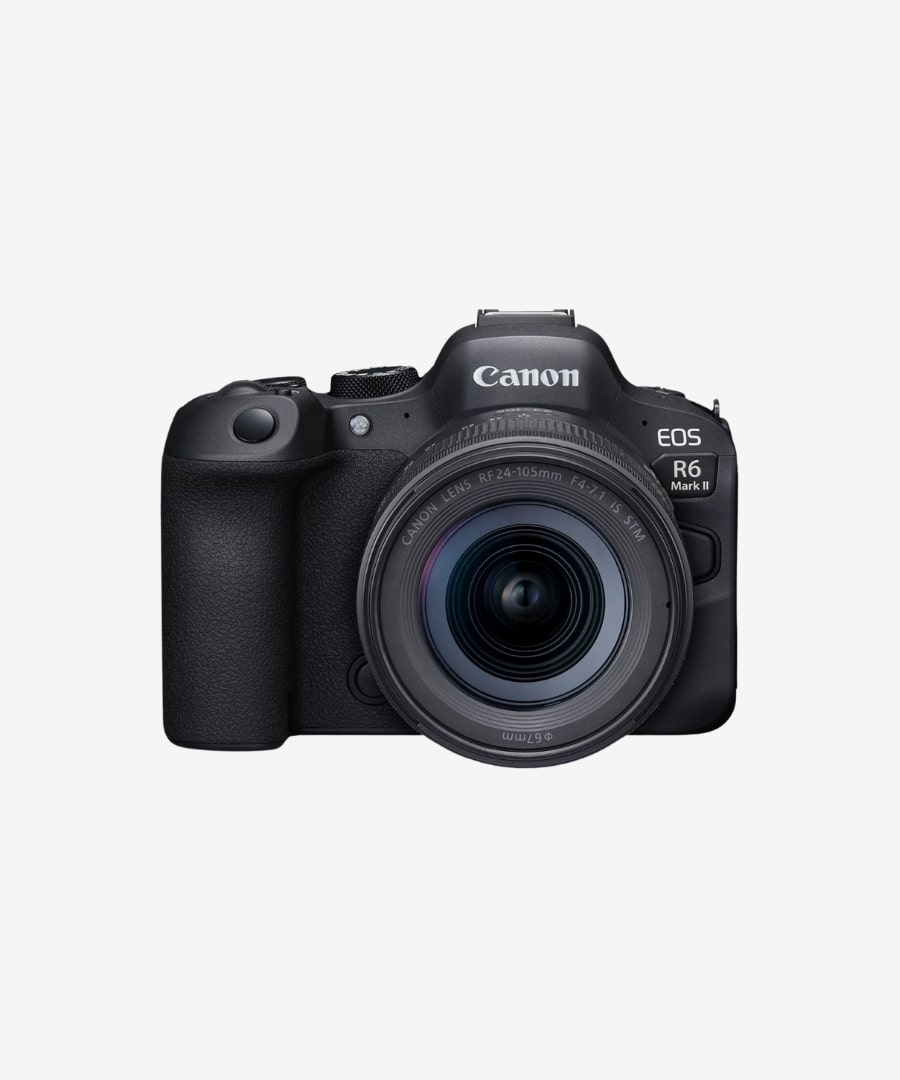
Canon EOS R6 Mark II User Interface and Controls
The Canon EOS R6 Mark II has three main dials: one for your index finger near the shutter button, another for your thumb on the back of the top plate, and a large dial on the rear plate. This setup allows for quick and intuitive control over your shooting settings.
In place of the old power switch, there is a dedicated stills/video mode selector on the left side. This new switch allows for easy switch between shooting modes without diving into menus. The camera’s rear layout remains largely unchanged with one thing. The R6 Mark II retains the ‘Rate’ button on the top left shoulder, a feature typically found on Canon’s more professional models. This button allows you to apply star ratings to your images in the field, which can be read by most photo editing software. To navigate the menus you can use the touchscreen functionality for quick access to settings and menu navigation.
The Custom Function Settings lets you to fine-tune various aspects of the camera’s performance. For instance, you can adjust the exposure level increments, choosing between 1/3-stop and 1/2-stop settings for shutter speed, aperture value, and exposure compensation. This level of precision gives you greater control over your exposure settings.
You can customize the bracketing sequence. You can change the order of shots in AEB (Auto Exposure Bracketing) and white balance bracketing. The options include 0, -, +; -, 0, +; and +, 0, -. to choose the sequence that best suits your workflow. The R6 Mark II also lets you adjust the number of bracketed shots. You can select between 2, 3, 5, or 7 shots in your bracketing sequence, giving you more options for capturing the perfect exposure or white balance in challenging lighting conditions.

Touchscreen Display
The camera’s touchscreen is a 3-inch panel with 1.62 million dots and is vari-angle to use in any direction. This design allows you to tilt and rotate the screen to almost any angle. You can even flip the screen forward, which is ideal for selfies and vlogging. You can use touch controls for intuitive settings adjustments and quick menu navigation. The Touch & Drag AF feature lets you move the AF point or Zone AF frame by tapping or dragging on the screen while looking through the viewfinder. It has a 0.5-inch electronic viewfinder (EVF) with 3.69 million dots and a high refresh rate of 120fps for tracking fast-moving subjects.
To customize the Touch & Drag AF, you can adjust several settings:
- Positioning Method: Choose between ‘Absolute’ (AF point moves to the exact tapped position) or ‘Relative’ (AF point moves in the direction you drag).
- Active Touch Area: Specify which part of the screen responds to touch operations.
- Relative Sensitivity: Adjust how quickly the AF point moves in response to your touch.
You can also set the touch control sensitivity to ‘Standard’ or ‘Sensitive’, or disable touch operations entirely if preferred. Remember to avoid using sharp objects or wet fingers on the touchscreen to ensure optimal performance and longevity.

Canon EOS R6 Mark II Video Recording Features
The Canon EOS R6 Mark II brings considerable improvements to its video capabilities. It makes 4K UHD video at 60 frames per second without any sensor crop. This is a significant upgrade from its predecessor without the 1.07x crop seen in the original R6. The absence of a crop factor means you can make full use of your lenses’ focal lengths, giving you more flexibility in your shots. You’ll experience less rolling shutter effect when shooting fast-moving subjects. There’s no recording time limit, allowing you to shoot continuously without interruption.
The R6 Mark II offers internal 10-bit 4:2:2 recording. This feature provides a wealth of color data to color grade your footage or apply effects like chroma keying in post-production. You can make Full HD 1080p video at an impressive 180 frames per second. This mode can record for up to 60 minutes before overheating or battery life becomes a concern.
The camera’s eye-tracking can be set by AF Servo mode to keep subject’s eyes remain tack-sharp in sports and action footage. The “sticky” nature of the eye box provides reliable focus concentrates on recording the perfect moment.
Autofocus Performance
The Canon EOS R6 AF system covers nearly 100% of the sensor area by offering 1053 focus zones for both stills and movies. This extensive coverage allows for effortless tracking, regardless of your subject’s position in the frame. It has ability to detect subjects even when they’re incredibly small in the frame. The AF point sticks to the subject perfectly by providing outstanding tracking performance. You have eight AF areas to choose from, ranging from a single point to the entire frame.
With over 4,000 autofocus points at your disposal, you can either select your preferred focus point or let the camera make the decision for you. The flexible zone AF settings detect subjects in the exact part of the frame you desire. Additionally, the camera offers customizable AF behavior for different buttons. For instance, you can set the AF-ON button for human eye AF with full-frame coverage and the asterisk button for vehicle AF and flexible zone AF.

Image Quality
The high ISO settings make images clean and detailed up to ISO 12,800. Even at ISO 25,600, the results are still usable in some situations. This ability allows you to use lenses with smaller maximum apertures without sacrificing image quality. The JPEG output from the R6 Mark II is superb. The camera’s sharpening algorithm does an excellent job of extracting fine detail from the RAW data. The color response in JPEGs is typical Canon – attractive with fairly saturated blues and greens, rich Caucasian skin tones, and yellows that lean slightly towards orange.

Connectivity and File Transfer
The Canon EOS R6 Mark II has a USB-C port that supports MFi connectivity by plugging the camera directly into an iPhone for seamless file transfer. It also has a plug for a wired remote and an HDMI-out port. The camera supports wireless LAN and Bluetooth 4.2. Canon provides a dedicated app called Mobile File Transfer for efficient file management. This app allows you to transfer tagged photos to a server, such as Dropbox, using your carrier’s network. For best performance when using the Mobile File Transfer app, Canon recommends using specific USB cables. For instance, the Anker/514 Lightning to USB-C Accessory Cable (0.9m) is suggested for connecting to an iPhone.

Canon EOS R6 Mark II Battery Performance
You can make more than 90 minutes of continuous 4K video in a single charge with Canon EOS R6 Mark II. For photos, it can take around 580 shots on a single full battery charge. With two LP-E6NH batteries in a grip, you can easily shoot over 2000 photos or even complete an 8-hour day of combined photo and video work without needing to change batteries. Battery life can vary depending on your shooting conditions and camera settings. For instance, when shooting wildlife or during long walks, you might find that one battery lasts about a day.
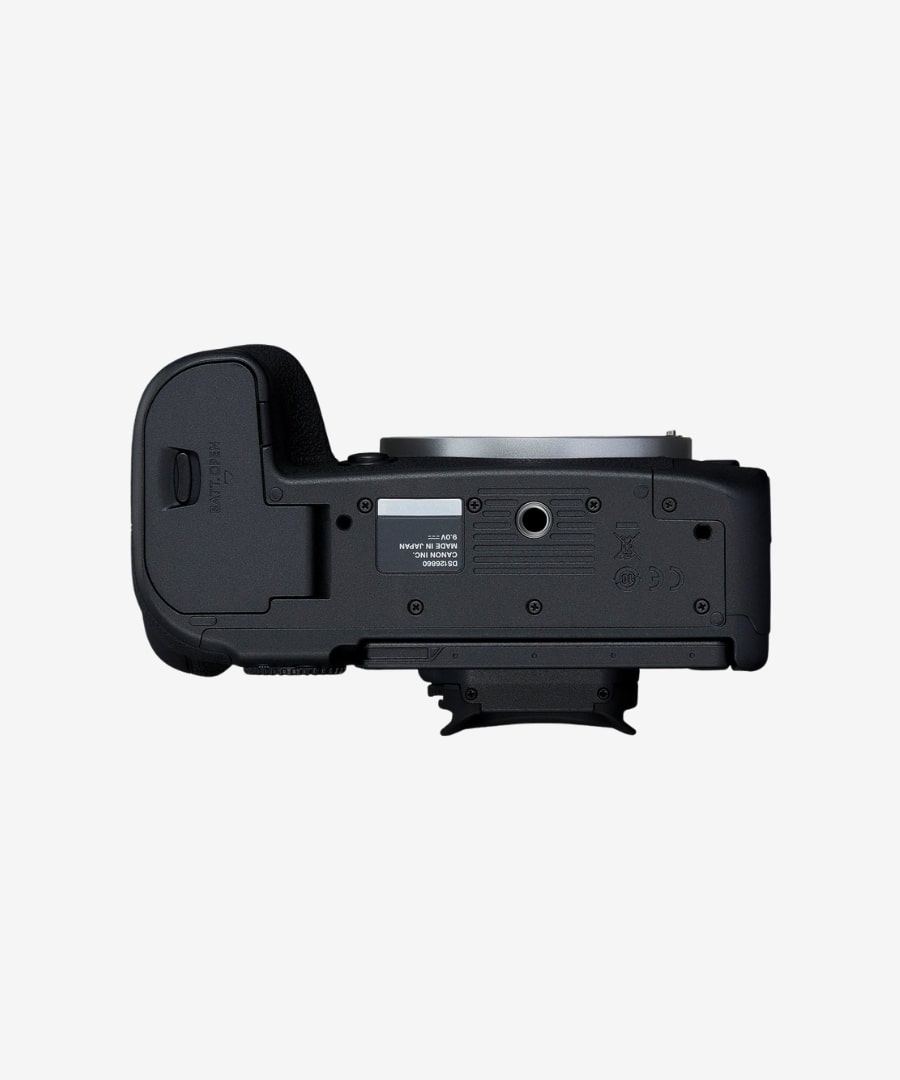
Memory and Storage
The Canon EOS R6 Mark II has two memory card slots that support SD, SDHC, and SDXC memory cards compatible with UHS-I and UHS-II standards. This dual-slot setup offers you flexibility in storage options and backup capabilities. When it comes to card speed, UHS-II cards outperform UHS-I cards. You can set the camera to record to a single card, automatically switch cards when one is full, or record the same image to both cards simultaneously for instant backup. For video shooters, the most demanding mode is 4K Timelapse at 29.97 or 25fps, which requires a write speed of about 58.75 MB/s.






